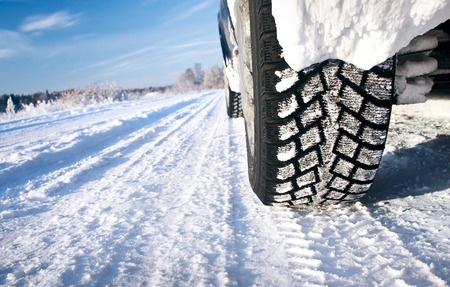Many drivers think that in the winter conditions the summer tires are still good. Many countries regulate legally that in the case of snow and ice the usage of summer tires is forbidden. Instead tires with an M + S letters or snowflake symbol are required on the roads.
If in winter someone causes an accident with summer tires, the liability will be partially or even completely hers, the insurer may refuse to reimburse the damage. Therefore, it is advisable to switch to winter tires.
How behave summer tire in winter?
Summer tires are designed to make adhesion well on the road in hot weather. When the temperature is cold, it occurs that the summer tires lose a significant part of the grip, because the rubber mixture will hardens at low temperatures. The rubber will change for a flexible, elastic to a rigid plastic material. The result of there will be a longer braking distance.
In winter conditions if the roads are dry summer tire can be used, but the wet weather can cause problems for it. In this time, the breaking distance may increase suddenly, and the control of the vehicle could substantially deteriorate.
In snowy, icy roads is almost impossible to stop a car – which is equipped with summer tires – quickly, the possibility of maneuvering is minimal. If you suddenly need to avoid a snow bank, or appear any obstacles on the road, with winter tires you can solve the situation relatively without any problem, but a summer-tires-car can slip or spin because of the smallest displacement of the steering wheel.

Why are winter tires safer in cold weather?
Winter tires are special, soft, elastic-tread tires that aren’t hard so they allow stabile ride. In the case of freezing temperatures winter tires use a large number of lamellae, so they can absorb more mud and snow, resulting in improved adhesion.
Tread design
The slick (tires without tread) allows the optimal grip on dry roads, using a sticky rubber compound. This gives a maximum contact surface through which the car can connect to the ground. The tread also assists e.g. water and snow movement, making it possible that the tires properly connect to the road.
The snow can be a challenge because it can block the channels of the rubber. The summer tires are clogged quickly because of their narrow channels. The winter tread can effectively eliminates this problem, their tread has bigger channels (deeper and wider) so they are more resistant.
Winter tires squeeze out of the water, but are more likely to keep the snow.
Rivets
Those who live in extreme snowy area, tires with spikes are familiar sight. In these tires are metal spikes embedded in the tread. The idea is that the rivets “dig” into the ice, snow and increase the traction like a cat claws. However, tires with spikes may reduce the adhesion on dry roads, because the spikes restrict to the tire to contact with the road surface.
When winter road conditions come out, it is best to think with common sense. The tires are getting better now, but the physics aren’t always friendly. Always use the correct rubber, follow the local laws and enjoy the winter.
